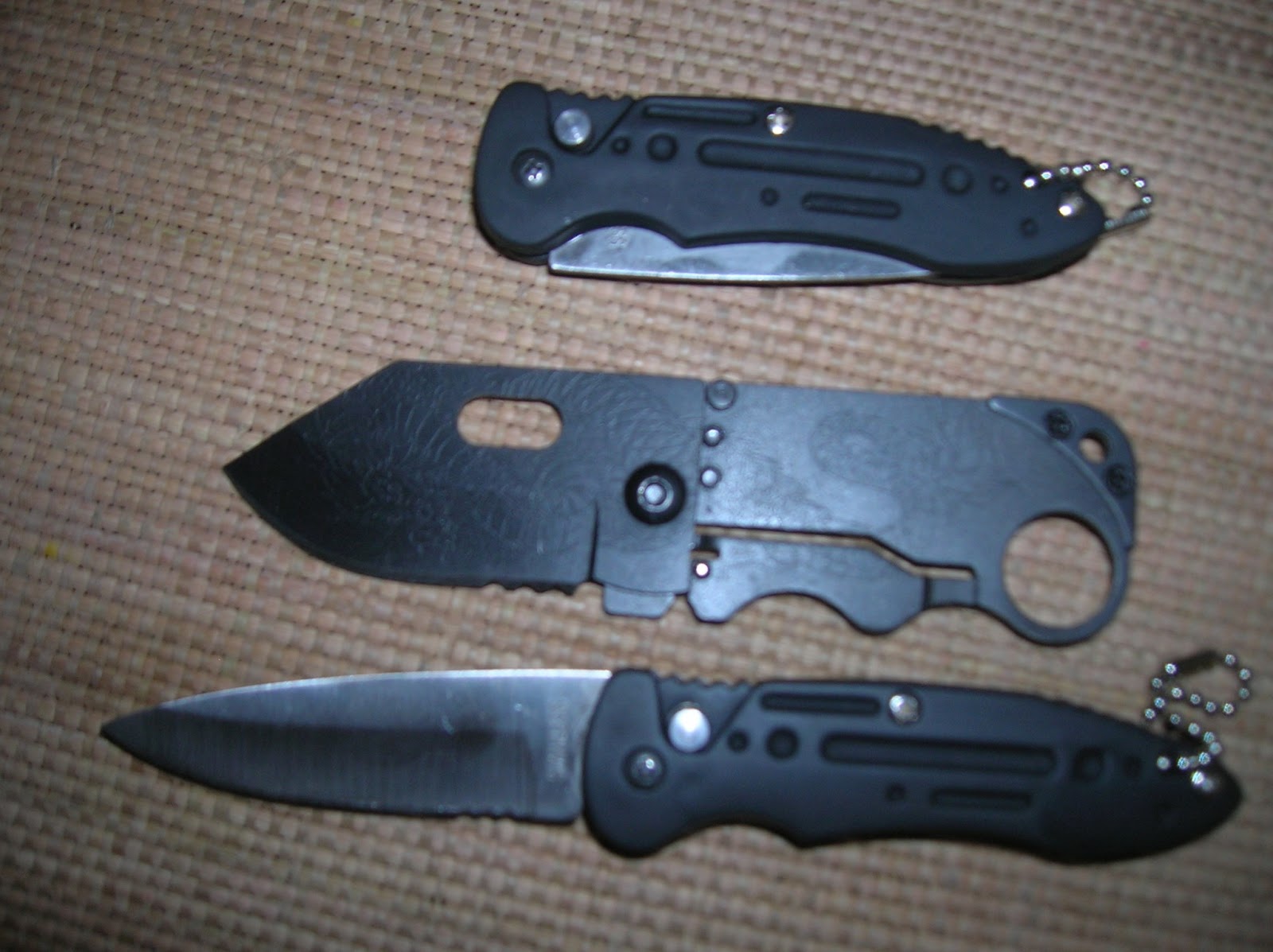The GIA
summer sale is still in progress.
Evidently it’s a success back in the USA but down here it’s a bust. I’ll keep the promo going but it’s time to
move on…
COPY CATS,
PERSONIFIED
One of the
industries I bought into while doing my “turn-around’ businesses, was the knife
industry. I became pretty good at converting these small unprofitable factories
into profit making concerns. I’ve
always had a love of knives; I made my first knife while on a fire look-out in
the Cascade Mountains of Oregon; I was just eighteen. I took an old car spring and
hand ground it (with a file) into a large butcher knife. It took me all summer.
When I was
operating these knife factories, I was the type of CEO that didn’t mind getting
dirty. Often I was sitting at a grinder
or some other piece of equipment in my shop when my employees arrived. I need to shorten this! Bottom line
– I like knives and was very good at designing and making prototypes for the
knife industry. Over the
years, the knife industry has changed a great deal. Not just a shift; a major upheaval! Like
everything else manufactured, the industry moved to China. The Chinese are the OEM for most major brands
of knives sold around the world.
I was
perusing a Chinese tools-for-sale site a few months back and discovered one of
the knives I designed 28 years ago. The unit is a 100% copy except for the
material. The original frame was made
from milled titanium and the blade was Damascus steel. The blade on the Chinese unit is just plain; not
serrated at all. I modified the two I just
purchased. I believe in partial
serration on all blades. I can
understand why the Chinese didn’t add that feature. It’s expensive; requiring two or three
additional steps in the manufacturing process.
I also purchased another knife I designed. It’s an automatic. But, again, it doesn’t
have the serrations on the blade. The thoughts behind an auto are: you need it
out—open and cutting fast. If you don’t have the serrations on the base of the
blade you won’t be cutting fast – like a seatbelt, parachute cord or a tangled rein. The perception has always been – switchblades
are for fighting. Bull. Switchblades were designed for
paratroopers. No one would purposely
fight with a switchblade. The hardness
in the blade of the ‘auto’ is around 55 to 57Rc. The ‘Bulldog,’ the one in the
photo above, has a properly hardened blade, too; around 57Rc. The frame has been heat-treated as well in
order for the ‘frame-lock’ to function properly.
The diamond
sharpeners shown in the photo were a real find. I haven’t owned them long
enough to test for longevity but I suspect from my initial usage they bring a
lot of sharpness for the buck. None of
my knives have been properly sharpened since I arrived in Panama ten years
ago. Scissors and cheap kitchen knives I
just threw away. I had ordered several
of the diamond sharpeners from e-bay and other sites. They didn’t work properly. These do. They have a flat surface that roughs the
bevel and a round side that acts as a ‘steel’ to remove the burrs. Turn the
unit around and you have a ‘rat tail’ for sharpening serrations. Now all my
knives are sharp and my scissors, too. Next project a couple of machetes.
 Another
item I found in China is a perfect cell phone for Panama. It’s a dual SIM, quad band. It’s 4G so it will take any of the data chips
from the local carriers. Connecting to the internet through the cell towers is
superior to looking for WIFI hotspots in Panama. The extras are too long to list but it’s
really handy to have TV capability when the power is out – that’s quite often. It’s
also neat to have two cameras; one on the front and one in the back. I use Skype a lot and this front camera is
just right for Skype on the go!
Another
item I found in China is a perfect cell phone for Panama. It’s a dual SIM, quad band. It’s 4G so it will take any of the data chips
from the local carriers. Connecting to the internet through the cell towers is
superior to looking for WIFI hotspots in Panama. The extras are too long to list but it’s
really handy to have TV capability when the power is out – that’s quite often. It’s
also neat to have two cameras; one on the front and one in the back. I use Skype a lot and this front camera is
just right for Skype on the go!



No comments:
Post a Comment
Note: Only a member of this blog may post a comment.